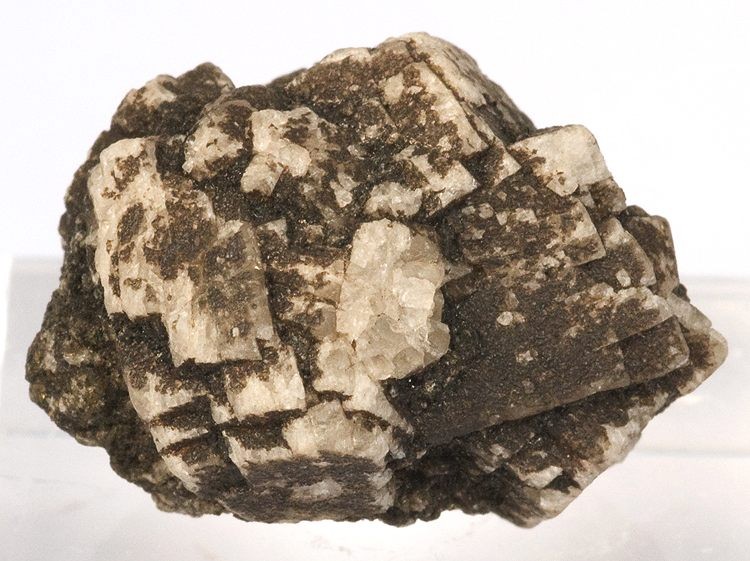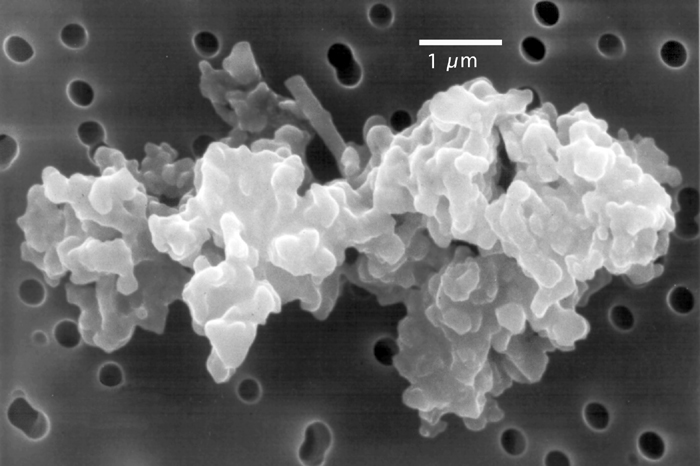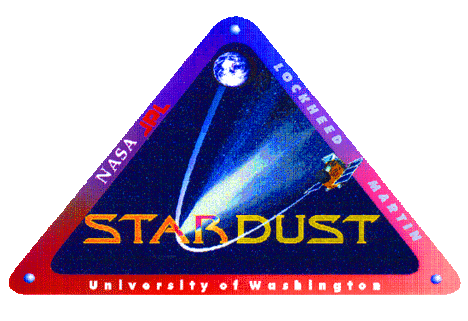|
Wild 2
Comet 81P/Wild, also known as Wild 2 (pronounced "vilt two") ( ), is a comet named after Swiss astronomer Paul Wild, who discovered it on January 6, 1978, using a 40-cm Schmidt telescope at Zimmerwald, Switzerland. For most of its 4.5 billion-year lifetime, Wild 2 probably had a more distant and circular orbit. In September 1974, it passed within one million kilometers of the planet Jupiter, the strong gravitational pull of which perturbed the comet's orbit and brought it into the inner Solar System. Its orbital period changed from 43 years to about 6 years, and its perihelion is now about 1.59 astronomical unit (AU). Nucleus parameters * Dimensions: * Density: * Mass: 2.3 x 1013 kg (5.1 x 1013 lb) Exploration NASA's Stardust Mission launched a spacecraft, named '' Stardust'', on February 7, 1999. It flew by Wild 2 on January 2, 2004, and collected particle samples from the comet's coma, which were returned to Earth along with interstellar dust it collected durin ... [...More Info...] [...Related Items...] OR: [Wikipedia] [Google] [Baidu] |
Wild2 3
Wild, wild, wilds or wild may refer to: Common meanings * Wild animal * Wilderness, a wild natural environment * Wildness, the quality of being wild or untamed Art, media and entertainment Film and television * ''Wild'' (2014 film), a 2014 American film from the 2012 book * ''Wild'' (2016 film), a 2016 German film * ''The Wild'', a 2006 Disney 3D animation film * ''Wild'' (TV series), a 2006 American documentary television series * The Wilds (TV series), a 2020 fictional television series Literature * '' Wild: From Lost to Found on the Pacific Crest Trail'' a 2012 non-fiction book by Cheryl Strayed * ''Wild, An elemental Journey'', a 2006 autobiographical book by Jay Griffiths * ''The Wild'' (novel), a 1991 novel by Whitley Strieber * ''The Wild'', a science fiction novel by David Zindell * ''The Wilds'', a 1998 limited-edition horror novel by Richard Laymon Music * ''Wild'' (band), a five-piece classical female group Albums and EPs * ''Wild'' (EP), 2015 * ''Wild'' ... [...More Info...] [...Related Items...] OR: [Wikipedia] [Google] [Baidu] |
Comet 81P Wild 2010-01-17
A comet is an icy, small Solar System body that, when passing close to the Sun, warms and begins to release gases, a process that is called outgassing. This produces a visible atmosphere or coma, and sometimes also a tail. These phenomena are due to the effects of solar radiation and the solar wind acting upon the nucleus of the comet. Comet nuclei range from a few hundred meters to tens of kilometers across and are composed of loose collections of ice, dust, and small rocky particles. The coma may be up to 15 times Earth's diameter, while the tail may stretch beyond one astronomical unit. If sufficiently bright, a comet may be seen from Earth without the aid of a telescope and may subtend an arc of 30° (60 Moons) across the sky. Comets have been observed and recorded since ancient times by many cultures and religions. Comets usually have highly eccentric elliptical orbits, and they have a wide range of orbital periods, ranging from several years to potentially several mil ... [...More Info...] [...Related Items...] OR: [Wikipedia] [Google] [Baidu] |
Anorthite
Anorthite is the calcium endmember of the plagioclase feldspar mineral series. The chemical formula of pure anorthite is Ca Al2 Si2O8. Anorthite is found in mafic igneous rocks. Anorthite is rare on the Earth but abundant on the Moon. Mineralogy Anorthite is the calcium-rich endmember of the plagioclase solid solution series, the other endmember being albite (NaAlSi3O8). Anorthite also refers to plagioclase compositions with more than 90 molecular percent of the anorthite endmember. At standard pressure, anorthite melts at .J.R. Goldsmith (1980): The melting and breakdown reactions of anorthite at high pressures and temperatures. Am. Mineralogist. 65, 272-284, http://www.minsocam.org/ammin/AM65/AM65_272.pdf Occurrence Anorthite is a rare compositional variety of plagioclase. It occurs in mafic igneous rock. It also occurs in metamorphic rocks of granulite facies, in metamorphosed carbonate rocks, and corundum deposits. Its type localities are Monte Somma and Valle d ... [...More Info...] [...Related Items...] OR: [Wikipedia] [Google] [Baidu] |
Olivine
The mineral olivine () is a magnesium iron silicate with the chemical formula . It is a type of nesosilicate or orthosilicate. The primary component of the Earth's upper mantle, it is a common mineral in Earth's subsurface, but weathers quickly on the surface. For this reason, olivine has been proposed as a good candidate for accelerated weathering to sequester carbon dioxide from the Earth's oceans and atmosphere, as part of climate change mitigation. Olivine also has many other historical uses, such as the gemstone peridot (or chrysolite), as well as industrial applications like metalworking processes. The ratio of magnesium to iron varies between the two endmembers of the solid solution series: forsterite (Mg-endmember: ) and fayalite (Fe-endmember: ). Compositions of olivine are commonly expressed as molar percentages of forsterite (Fo) and fayalite (Fa) (''e.g.'', Fo70Fa30). Forsterite's melting temperature is unusually high at atmospheric pressure, almost , while ... [...More Info...] [...Related Items...] OR: [Wikipedia] [Google] [Baidu] |
CHON
CHON is a mnemonic acronym for the four most common elements in living organisms: carbon, hydrogen, oxygen, and nitrogen. The acronym CHNOPS, which stands for ''c''arbon, ''h''ydrogen, ''n''itrogen, ''o''xygen, ''p''hosphorus, ''s''ulfur, represents the six most important chemical elements whose covalent combinations make up most biological molecules on Earth. They were created in stars in outer space a long time ago and when a supernova occurred, these elements were sent into space. All of these elements are nonmetals. In the human body, these four elements compose about 96% of the weight, and major minerals (macrominerals) and minor minerals (also called trace elements) compose the remainder. Sulfur is contained in the amino acids cysteine and methionine. Phosphorus is contained in phospholipids, a class of lipids that are a major component of all cell membranes, as they can form lipid bilayers, which keep ions, proteins, and other molecules where they are needed ... [...More Info...] [...Related Items...] OR: [Wikipedia] [Google] [Baidu] |
Lawrence Livermore National Laboratory
Lawrence Livermore National Laboratory (LLNL) is a federal research facility in Livermore, California, United States. The lab was originally established as the University of California Radiation Laboratory, Livermore Branch in 1952 in response to the detonation of the first atomic bomb by the Soviet Union during the Cold War. It later became autonomous in 1971 and was designated a national laboratory in 1981. A federally funded research and development center, Lawrence Livermore Lab is primarily funded by the U.S. Department of Energy and it is managed privately and operated by Lawrence Livermore National Security, LLC (a partnership of the University of California), Bechtel, BWX Technologies, AECOM, and Battelle Memorial Institute in affiliation with the Texas A&M University System. In 2012, the laboratory had the synthetic chemical element livermorium (element 116) named after it. Overview LLNL is self-described as a "premier research and development institution for ... [...More Info...] [...Related Items...] OR: [Wikipedia] [Google] [Baidu] |
Stardust@Home
Stardust@home is a citizen science project that encourages volunteers to search images for tiny interstellar dust impacts. The project began providing data for analysis on August 1, 2006. From February to May 2000 and from August to December 2002, the ''Stardust'' spacecraft exposed its "Stardust Interstellar Dust Collector" (SIDC), a set of aerogel blocks about 0.1 m2 (1 ft²) in total size, to interstellar dust. The collector media consist of 130 blocks of 1 and 3 cm thick silica-based aerogel mounted in aluminum cells. In order to spot impacts of interstellar dust, just over 700,000 individual fields of the aerogel will have to be visually inspected using large magnification. Each field, which is composed of 40 images, will thus be termed a "focus movie". Stardust@home will try to achieve this by distributing the work among volunteers. Unlike distributed computing projects, it does not try to harness the processing power of many computers. It uses them only to dist ... [...More Info...] [...Related Items...] OR: [Wikipedia] [Google] [Baidu] |
The Planetary Society
The Planetary Society is an American internationally-active non-governmental nonprofit organization. It is involved in research, public outreach, and political space advocacy for engineering projects related to astronomy, planetary science, and space exploration. It was founded in 1980 by Carl Sagan, Bruce Murray, and Louis Friedman, and has about 60,000 members from more than 100 countries around the world. The Society is dedicated to the exploration of the Solar System, the search for near-Earth objects, and the search for extraterrestrial life. The society's mission is stated as: "Empowering the world’s citizens to advance space science and exploration." The Planetary Society is a strong advocate for space funding and missions of exploration within NASA. They lobby Congress and engage their membership in the United States to write and call their representatives in support of NASA funding. In addition to public outreach, The Planetary Society has sponsored solar sail ... [...More Info...] [...Related Items...] OR: [Wikipedia] [Google] [Baidu] |
NASA
The National Aeronautics and Space Administration (NASA ) is an independent agencies of the United States government, independent agency of the US federal government responsible for the civil List of government space agencies, space program, aeronautics research, and outer space, space research. NASA was National Aeronautics and Space Act, established in 1958, succeeding the National Advisory Committee for Aeronautics (NACA), to give the U.S. space development effort a distinctly civilian orientation, emphasizing peaceful applications in space science. NASA has since led most American space exploration, including Project Mercury, Project Gemini, the 1968-1972 Apollo program, Apollo Moon landing missions, the Skylab space station, and the Space Shuttle. NASA supports the International Space Station and oversees the development of the Orion (spacecraft), Orion spacecraft and the Space Launch System for the crewed lunar Artemis program, Commercial Crew Program, Commercial Crew ... [...More Info...] [...Related Items...] OR: [Wikipedia] [Google] [Baidu] |
Interstellar Dust
Cosmic dust, also called extraterrestrial dust, star dust or space dust, is dust which exists in outer space, or has fallen on Earth. Most cosmic dust particles measure between a few molecules and 0.1 mm (100 micrometers). Larger particles are called meteoroids. Cosmic dust can be further distinguished by its astronomical location: intergalactic dust, interstellar dust, interplanetary dust (such as in the zodiacal cloud) and circumplanetary dust (such as in a planetary ring). There are several methods to obtain space dust measurement. In the Solar System, interplanetary dust causes the zodiacal light. Solar System dust includes comet dust, asteroidal dust, dust from the Kuiper belt, and interstellar dust passing through the Solar System. Thousands of tons of cosmic dust are estimated to reach the Earth's surface every year, [...More Info...] [...Related Items...] OR: [Wikipedia] [Google] [Baidu] |
Stardust (spacecraft)
''Stardust'' was a 385-kilogram robotic space probe launched by NASA on 7 February 1999. Its primary mission was to collect dust samples from the coma of comet Wild 2, as well as samples of cosmic dust, and return them to Earth for analysis. It was the first sample return mission of its kind. En route to comet Wild 2, it also flew by and studied the asteroid 5535 Annefrank. The primary mission was successfully completed on 15 January 2006 when the sample return capsule returned to Earth. A mission extension, codenamed ''NExT'', culminated in February 2011 with ''Stardust'' intercepting comet Tempel 1, a small Solar System body previously visited by '' Deep Impact'' in 2005. ''Stardust'' ceased operations in March 2011. On 14 August 2014, scientists announced the identification of possible interstellar dust particles from the ''Stardust'' capsule returned to Earth in 2006. Mission background History Beginning in the 1980s, scientists began seeking a dedicated m ... [...More Info...] [...Related Items...] OR: [Wikipedia] [Google] [Baidu] |

.jpg)





